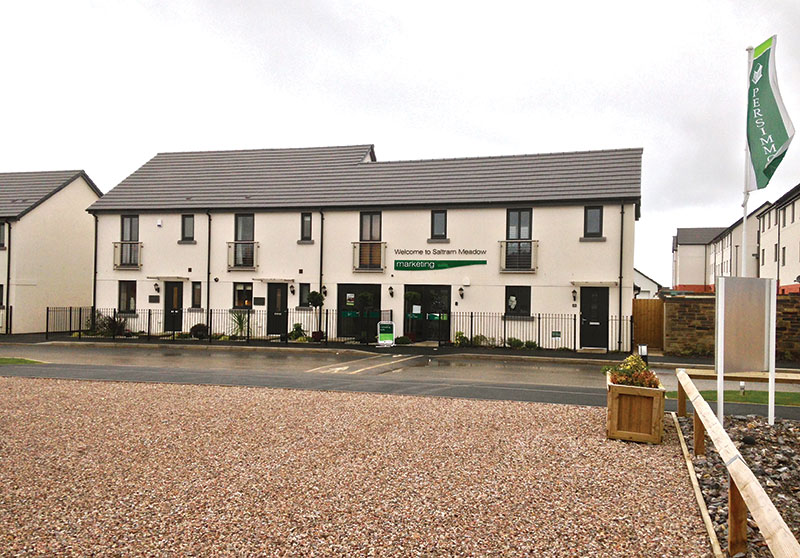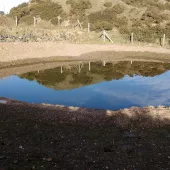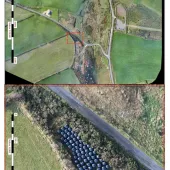Former Mineral Sites To Help Solve The Housing Crisis

First published in the May 2015 issue of Quarry Management as ‘Home Sweet Home’ ...and not just for wildlife
By Jonathan Reynolds, technical director – urban design and master planning, SLR
The CBI reported in 2014 that the UK needs to ‘double the number of new homes built every year within a decade’1, a position reinforced by the Bank of England’s Mark Carney’s comments that an overheating property market, due to shortage of supply, poses a significant risk to financial stability and long-term economic recovery2.
The need for a substantial increase in the number of new homes was highlighted by the Government in 2007 when it projected that 240,000 houses per annum would be required by 2016. It is now accepted that these numbers are not enough and an upward adjustment is needed as housing delivery fell sharply during the recession. Interestingly, minimum housing density requirements have been revoked in recent years in national planning policy. This reflects a demand for more family housing at lower densities, which requires proportionately more land to deliver that housing. The National Planning Policy Framework (NPPF) also promotes sustainable locations for development along with the concept of ‘garden cities’ and innovative development.
One of the big issues facing the house-building sector in many locations is the increasingly restricted supply of suitable land. This has occurred as towns and cities have grown and ‘pushed’ out into sensitive landscapes and met other physical constraints. As a result, land values have been pushed up where there is greater scarcity – a simple fact of supply and demand. This trend is coupled with increasing pressure on house builders to provide for infrastructure to service development, which comes with an associated increase in costs.
Against this backdrop, it is becoming ever more apparent that mineral sites should be seen as part of the solution to this housing crisis. Many quarries in the UK are situated in prime locations for redevelopment for housing, employment and mixed uses. This is especially the case where settlements have encroached towards them, making them less isolated, or where they are of a size which would allow them to be developed as stand-alone new settlements. Furthermore, many such sites are coming to the end of their useful lives and have planning consents for restoration schemes in place to take them back to a ‘semi-natural’ state, which, although a tried and tested approach, does not make the best use of previously developed land that is often well serviced with regards to water, electricity and access.
It is not only services and location relative to existing development that make minerals sites attractive. Many potential new-build development sites on the edge of towns and villages have a direct visual impact on the surrounding countryside, and in some places developers are now having to look to sites within Areas of Outstanding Natural Beauty (AONBs) or Areas of Great Landscape Value (AGLV). This is inevitable as settlements grow, however in contrast, minerals sites can often be developed with minimal or zero visual impacts, where roof ridgelines lie beneath the edge of the quarry face or are hidden behind mature woodlands that were often planted many years before to screen the quarry and its operations.
Redevelopment has advantages for landowners and operators too. It can increase asset value for owners and reduces or removes long-term liabilities. Minerals sites can also provide significant benefits for local communities alongside much needed housing, such as new local employment opportunities and community facilities. Redevelopment also often comes with significant recreational space, which is typically ‘out of bounds’ to the public without such enabling development.
Naturally, there are key issues which have to be overcome. First, taking the site through the planning system and getting planning consent needs a long-term view, particularly for larger sites. It requires not only a change of use but also a change in the perception of the quarry from being, ultimately, a restored greenfield site, to a regenerated brownfield site. Minerals sites are also often in the greenbelt, which typically requires greenbelt designation review. This requires engagement with the local community and the local planning authority as opposed to the mineral planning authority, unless both operate within a single unitary authority. Secondly, there are often considerable technical constraints to redevelopment, most specifically creating cost-effective engineered solutions to prepare sites for redevelopment.
SLR Consulting have a long history of minerals planning, permitting, engineering and restoration, and understand the business case extremely well. More recently, the consultancy has been responding to this change in the perception of minerals sites as places for redevelopment, even where landfill has been undertaken wholly or partially, by combining its well established landscape restoration and design teams as well as appointing new staff (including the author of this article) with experience of promoting quarry redevelopment schemes for housing and mixed-use development, some of which are now under construction.
This combination of good landscape and urban design within master planning is critical in promoting such schemes. In order to change the long-held perception of a quarry as an industrial site to a place for living, there has to be a strong vision. Due to quarries’ unique features and character, this vision often lends itself to new neighbourhoods based on ‘garden city’ principles enshrined in NPPF guidance. Quarries can be ‘layered’ and the natural stone cliffs can become a feature, whilst water can play an important element. Quarries can have micro-climates of their own, conducive to a wide variety of plant life, and they have good shelter from wind. To create this ‘vision’ requires expertise and close teamwork to deal with the design challenges, which can range from health and safety relating to the provision of safe environments near cliffs, to tree pit design for tree growth.
One large quarry site which is currently being transformed by Persimmon Homes from a disused quarry to a housing and mixed-use scheme is Plymstock Quarry, in Plymouth. A scheme was submitted by the developer in 2010 for 1,684 dwellings, a primary school, local centre, new infrastructure, a business park and additional employment area, and extensive open space. The planning ‘green light’ was given in 2011 and the scheme, which is projected to take more than 15 years to complete, is now under construction.
This former limestone and shale quarry with cement works is surrounded by woodland and green space on three sides, including a large woodland area to the north and land which was not previously worked and is elevated above the main quarry to the east. Jonathan Reynolds, who acted as the lead urban designer and master planner for the approved scheme, came up with a revised and cohesive vision for the site, presented in the form of a comprehensive master plan. Working closely with the engineers and wider team, the idea of a central spine route connecting the higher part of the site to the remainder of the quarry brought the various elements together in a strong and logical structure. A development platform was created to allow access from the base of the quarry to the upper level.
The scheme was promoted as an ‘urban village’ with different character areas along the spine, and with a central main square and mixed-use core forming the heart of the scheme. Along the spine route are also a series of other design interventions, including a circus on the higher ground and a linear water park within the base of the quarry to reflect light and create a unique space. The higher southern cliffs provide shelter from the sun for the employment park beneath.
To provide better access and open up the site, a cliff face and hillside were removed along a length of the quarry. The blast material was reworked and, together with new fill material, used to create new development platforms and reduce the height of the cliffs on the northern side, which stood at more than 40m in places. The reworking of the quarry has been on an enormous scale and, now that houses have been built, the site is being transformed into a liveable neighbourhood. This was enabled by not only a long-term approach to promoting the scheme through the planning system, but also on the vision which underpinned all aspects of the proposals and formed the basis to a practical and viable scheme.
Richard Briggs, divisional strategic land director for Persimmon Homes and manager of the proposals as they were being developed, commented: ‘Plymstock Quarry presented a number of complex challenges which have been addressed by an innovative approach to the scheme’s design. A critical part of the development process was to create a consistent vision for the site which was both imaginative, deliverable and viable. We are now transforming a large area of once redundant land into an inspirational community combining homes, employment, leisure, recreational areas, open spaces, and transport − all carefully blended to create a new area for people to live and work in Plymouth.’
Redeveloping quarries to create new communities is not a new concept, but ever-increasing pressures on land combined with a need to deliver housing and larger employment uses with visual impacts, places mineral sites in a unique position. SLR are currently involved in a number of such schemes across the UK in response to this exciting change in the ‘aftercare’ of quarries. For further information contact: jreynolds@slrconsulting.com
References
- ‘Housing Britain – Building New Homes for Growth’, CBI, 2014.
- ‘The Bank of England’s Mark Carney warns on housing market’, BBC Business News, May 2014.
- Subscribe to Quarry Management, the monthly journal for the mineral products industry, to read articles before they appear on Agg-Net.com








